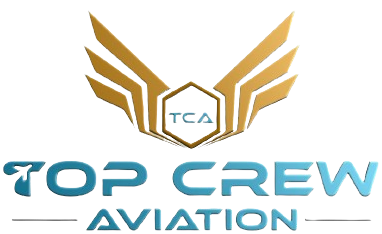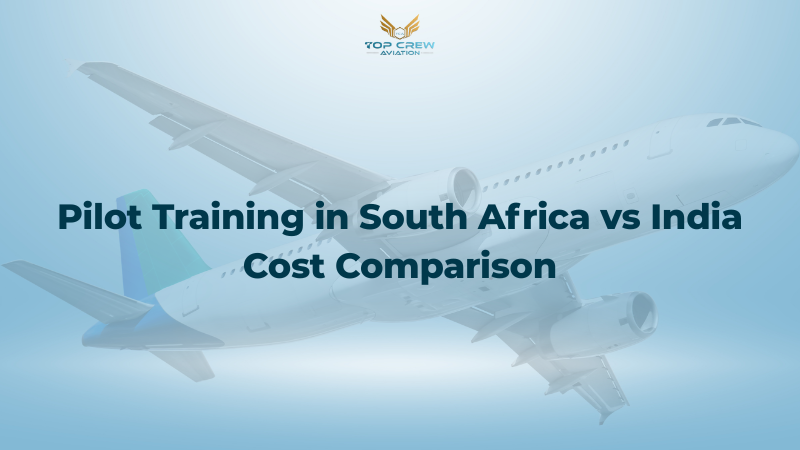Dreaming of soaring high in the skies as a commercial pilot is exciting, but before you step into a cockpit, one critical factor stands in your way — the cost of pilot training. Training to become a pilot is a serious investment, and for aspiring aviators from India, two of the most common choices are pursuing training locally in India or heading to South Africa, a country globally recognized for quality and cost-effective aviation training.
Both destinations have their pros and cons, and costs vary depending on flying hours, facilities, ratings, and living expenses. In this blog, we will break down the expenses, compare the two countries, and help you understand which path might suit your goals better.
Why Compare South Africa and India?
- South Africa is known as an international hub for aviation training. Favorable weather, competitive pricing, and global-standard flight schools attract hundreds of students every year.
- India, on the other hand, is home ground for Indian students. Training here means aligning directly with DGCA requirements, ensuring smooth career progression in the domestic aviation sector.
But how do costs really compare? Let’s break it down.
Key Factors Affecting Pilot Training Cost
Before looking at numbers, here are the main elements that influence total expenses in both countries:
- Flying Hours – DGCA mandates a minimum of 200 hours for CPL (Commercial Pilot License). Hourly aircraft rates form the bulk of training costs.
- Ground School & Exams – Includes theory classes, DGCA/CAA exams, and study material.
- Ratings & Simulators – Instrument Rating (IR), Multi-Engine Rating (ME), Night Rating, and simulator sessions.
- Medical Tests – Compulsory medical examinations for fitness.
- Living Expenses – Accommodation, food, and local transport.
- Miscellaneous Costs – Uniforms, books, license application fees, insurance, and visa (if training abroad).
Cost Breakdown – South Africa vs India
Here’s a comparative look at the average expenses:
| Expense Component | South Africa (Approx.) | India (Approx.) |
| Flying Hours (200 hrs) | ZAR 330,000 – 650,000 (~USD 40,000 – 70,000) | ₹15 – 25 Lakh |
| Instrument Rating (IR) | ZAR 90,000 – 120,000 | ₹2 – 4 Lakh |
| Multi-Engine Rating (ME) | ZAR 100,000+ | ₹2 – 6 Lakh |
| Ground School & Exams | ZAR 20,000 – 40,000 | ₹1 – 3 Lakh |
| Medical Tests | ZAR 5,000 – 8,000 | ₹20,000 – 50,000 |
| Living & Accommodation | ZAR 8,000 – 12,000/month | ₹15,000 – 35,000/month |
| Total Program Cost | USD 40,000 – 70,000 (~₹32 – 55 Lakh) | ₹20 – 40 Lakh |
Why South Africa May Be Cheaper in the Long Run
- Weather Advantage – With more sunny flying days, students log hours faster, reducing delays and extra expenses.
- Lower Operational Costs – Aircraft rental, aviation fuel, and maintenance are more affordable compared to India.
- International Exposure – Training with global students provides wider networking opportunities.
Why India Still Appeals to Many Students
- DGCA Recognition – Training under DGCA ensures your license is immediately valid for Indian airlines.
- No Conversion Hassle – If you train abroad, you must convert your foreign CPL to DGCA, which adds time and money.
- Home Advantage – Staying close to family reduces living costs and provides a familiar cultural environment.
Cost Efficiency: Which is Better?
- For Faster Completion & International Experience: South Africa is often better. The weather, lower cost per flying hour, and strong aviation ecosystem mean fewer delays and smoother training.
- For Indian Airline Aspirants: India is safer and more straightforward. No conversion, no visa, and training directly aligned with DGCA requirements.
Pros & Cons Summary
| Factor | South Africa | India |
| Training Cost | Moderate to high (USD 40k–70k) | Moderate (₹20–40 Lakh) |
| Training Duration | Faster due to good weather | May face delays (aircraft shortage, weather) |
| License Recognition | Needs conversion to DGCA for Indian jobs | Direct DGCA license |
| Living Costs | Extra (accommodation + visa) | Home advantage, can be cheaper |
| Exposure | International, diverse airspace | Domestic, India-specific airspace |
| Ease of Career Start | Conversion required | Direct entry to airlines |
Tips to Save Money on Pilot Training
- Plan for Extra Hours: Always keep a 10–15% buffer above minimum hours.
- Check Inclusions: Some “all-inclusive” packages may exclude IR/ME ratings. Read the fine print.
- Look for Scholarships & Loans: Many banks and aviation academies provide education loans.
- Choose Location Wisely: In India, flying schools in metro cities may have higher living costs compared to smaller towns.
Conclusion
Both South Africa and India are excellent choices for pilot training, but the right decision depends on your career goals and financial capacity.
- If you want faster training, international flying exposure, and competitive hourly rates, South Africa is the clear winner.
- If your goal is to work with Indian airlines and avoid conversion hassles, India offers better alignment with DGCA requirements.
In either case, pilot training is an investment that pays off with a rewarding aviation career.
If you’re serious about becoming a professional pilot, Top Crew Aviation is here to guide you. With expert mentorship, global partnerships, and personalized career counseling, TCA helps aspiring aviators choose the right pathway — whether in India or abroad. Contact Top Crew Aviation today and take the first step towards your aviation dream!
FAQs
1. How many hours are needed for CPL?
Minimum 200 flying hours are required by DGCA and SACAA (South Africa).
2. Can a South African CPL be used in India?
Yes, but you need to undergo DGCA conversion exams and checks.
3. Which is faster: India or South Africa?
South Africa usually offers quicker completion due to favorable weather.
4. Is pilot training in India cheaper than South Africa?
On paper, India appears cheaper, but delays and limited aircraft availability can push costs up.
5. Can I get education loans for pilot training?
Yes, many banks in India provide loans for aviation courses.


